During its October meeting, the Churchill County School Board of Trustees received a report from Human Resources Manager Cameron Sorensen on the Nevada Educator Performance Framework (NEPF) regarding the scores from the 2023-24 staff evaluations and the data from the staff survey.
According to Sorensen, the Department of Education staff met with district leadership to review the licensed staff evaluation results and assess the survey feedback, which highlighted both strengths and areas for improvement in how staff perceive and utilize the evaluation system.
There were 170 licensed staff evaluated, and none were rated as ineffective or developing. In fact, all the evaluations showed that they were effective or highly effective. Additionally, the number of teachers evaluated in FY 2024 dropped by 29% compared to the previous year, with only licensed teachers being evaluated.
In his report, Sorensen said that although highly effective ratings for staff increased significantly, from 14.68% in 2022 to 47.41% in 2024, this rise doesn’t correlate directly with improved student performance, “indicating a need to better align teacher ratings with student outcomes.” While the highly effective rating surpasses the statewide average of 19.83%, the disparity emphasizes the need to analyze whether the evaluation process reflects teacher impact in the classroom.
Recent 2023-24 school year results for scores measuring English Language Arts and Math proficiency show that Churchill Middle Schoolers dropped from 30.9% to 25.9%, and the High School students decreased from 48.8% to 37.6% in ELA. Middle school students dropped from 15.6% to only 1.8% proficiency in math, and high school students went from 19% to 13.6% proficient in math.
Survey results from the staff evaluated indicated a favorable perception of the NEPF system, with most teachers finding it fair and impactful in improving instructional practice.
“I found it interesting,” said Board President Gregg Malkovich. “There was a higher percent of highly effective than the percentage who thought it was fair, which tells me even those who were highly effective don’t think it’s fair, that means it’s broken.”
Trustee Kathryn Whitaker was less than pleased with the data, saying the evaluations didn’t match the student performance results. “When I look at this, it looks like everyone gets a ribbon for participation, and it absolutely has to change,” she said. “I’m tired of seeing the same results.”
She expressed frustration that the district still has one-star schools, and the Smarter Balanced Assessments are also down. “The NEPF says of 135 teachers, half are highly effective – how does that even track? I know there are issues, but are we really changing our practices to help the students? I’m not seeing that in reports, in what’s going on. The needle still hasn’t moved.”
Superintendent Derild Parsons said he agreed with Whitaker’s frustrations. “Stacey (Cooper) is working with the administration to make sure the evaluations are more meaningful. Our hope is when we do this report next year our student performance equates a lot better to what we see in our evaluations.”
The NEPF has been fraught with controversy since the Nevada Department of Education released the measuring tool in 2019. The tool is a result of legislation initially passed during the 2011 session of the Nevada Legislature. It was designed to create a statewide way to evaluate teachers and administrators, rating them as highly effective, practical, minimally effective, or ineffective. The tool also provided student achievement data from statewide assessments to determine educator effectiveness ratings.
Over the years, revisions to the teacher evaluation eventually removed statewide performance measures based on student performance, implementing a Student Performance domain that was adjusted to weight from 40% to 15%.
The NEPF's goals are to foster student learning and growth, improve educators’ instructional practices, inform human capital decisions, and engage stakeholders in the continuous improvement and monitoring of a professional growth system.
The main purpose of the framework, as stated by the Nevada Department of Education, is to determine “whether educators are helping students meet achievement targets and performance expectations.”
Sorensen reported that the following steps will include refining the evaluation process to ensure that the increase in highly effective ratings translated into measurable student performance improvements and strengthening tracking mechanisms for probationary and permanent staff to ensure proper evaluation procedures are followed and staff are supported.
For the online version of this story, go to https://www.thefallonpost.org/article/6697,local-public-schools-struggle-to-make-the-grade-nevada-report-card-released-this-week.


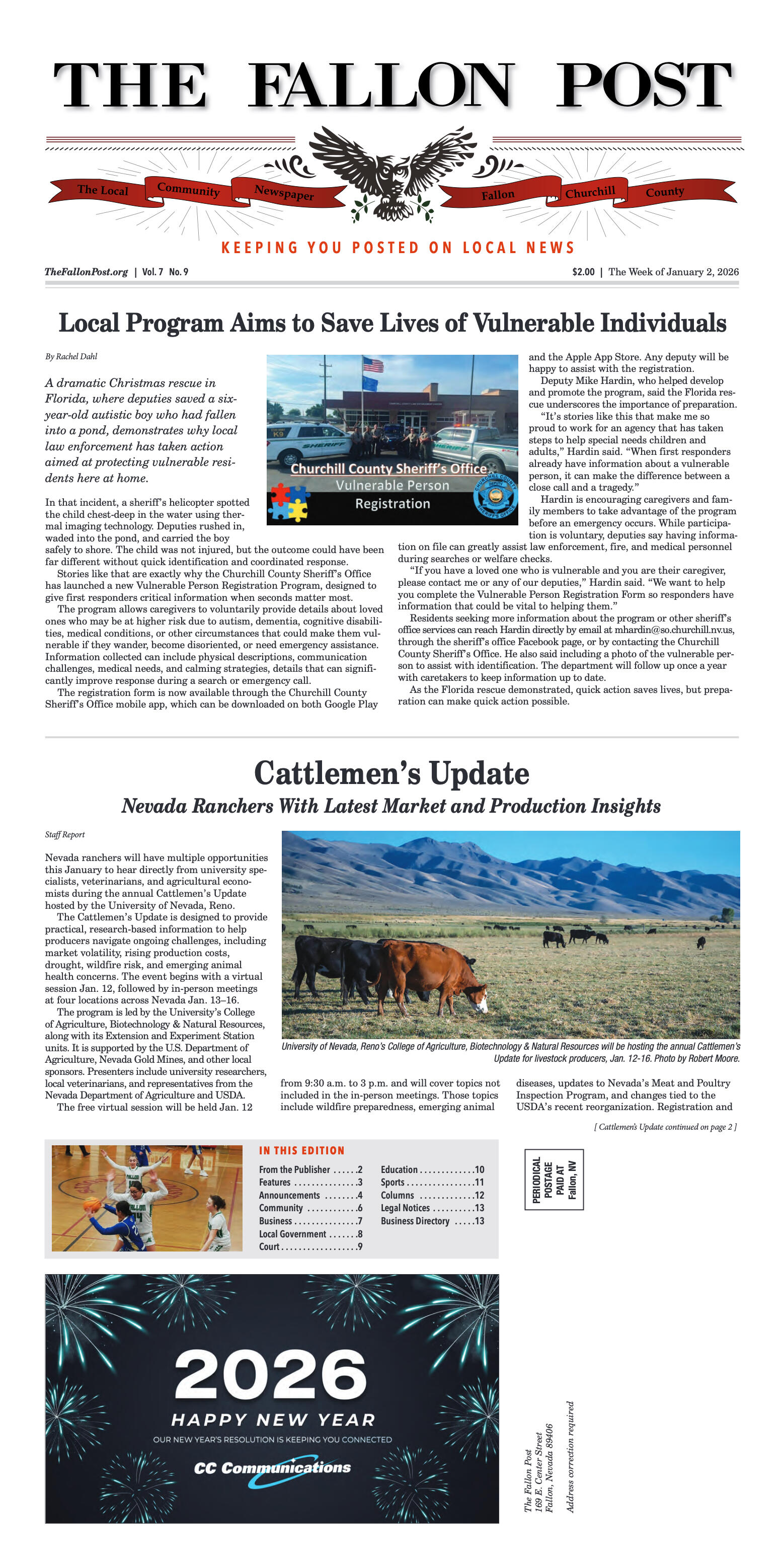
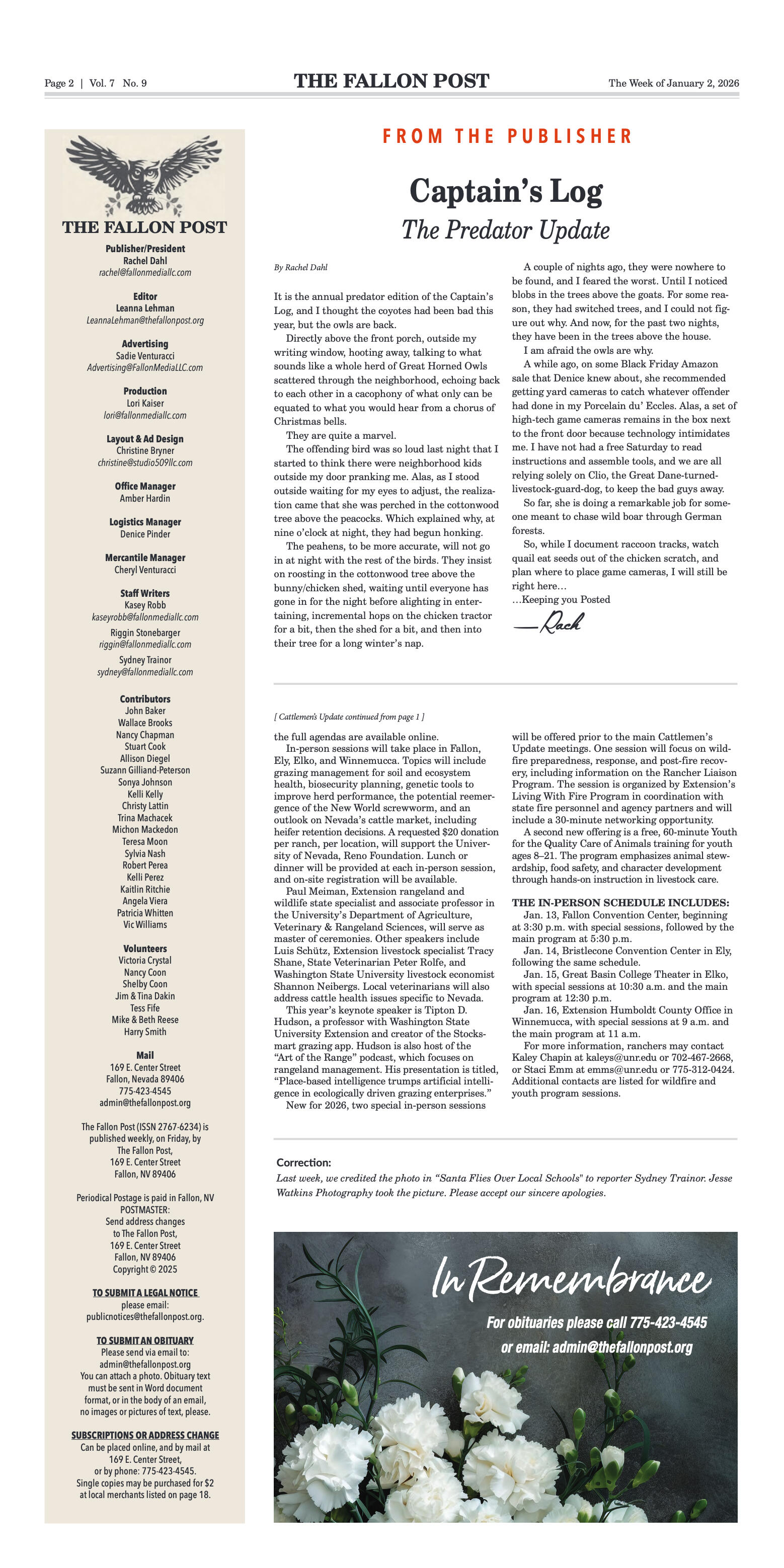
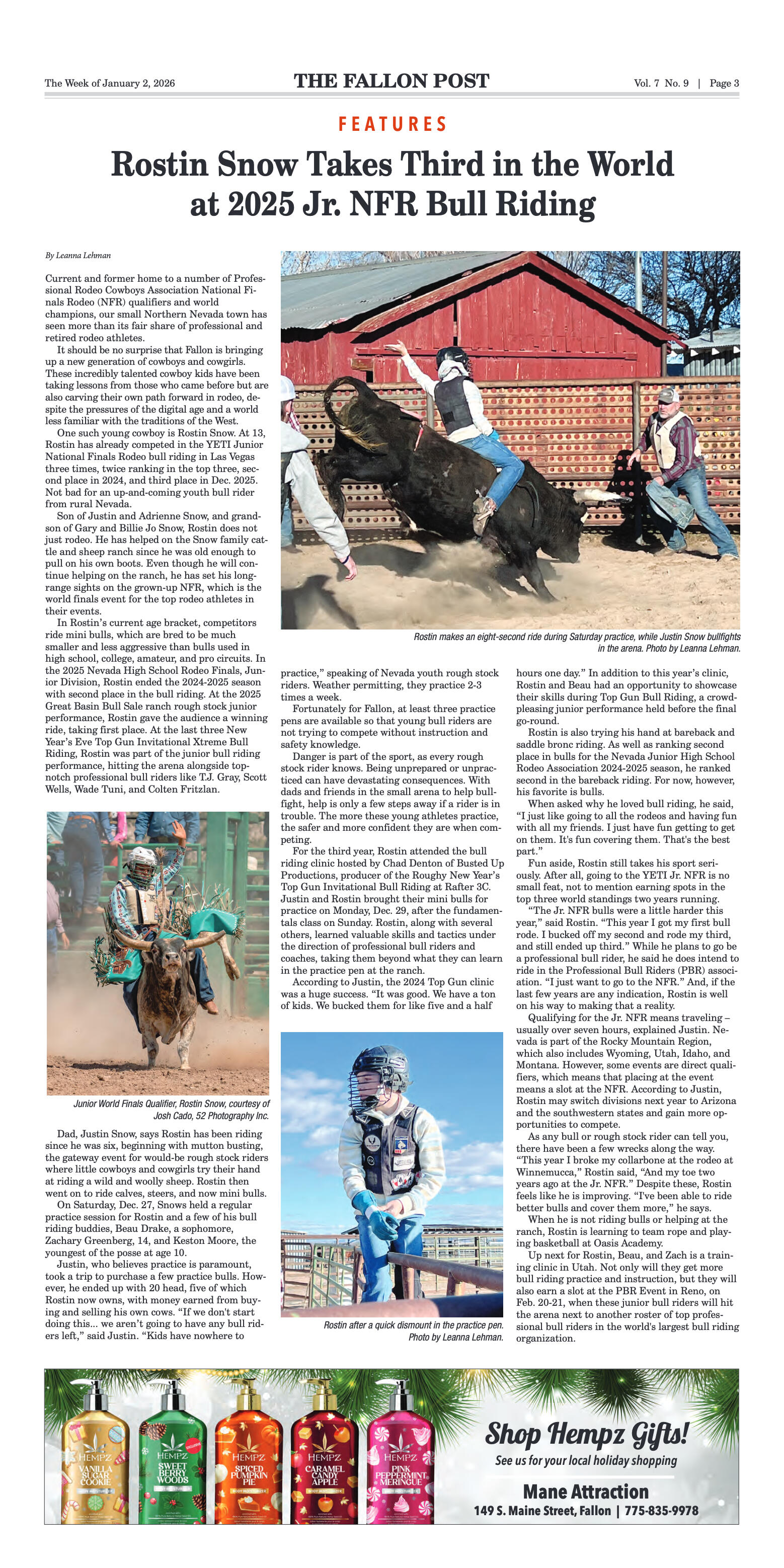
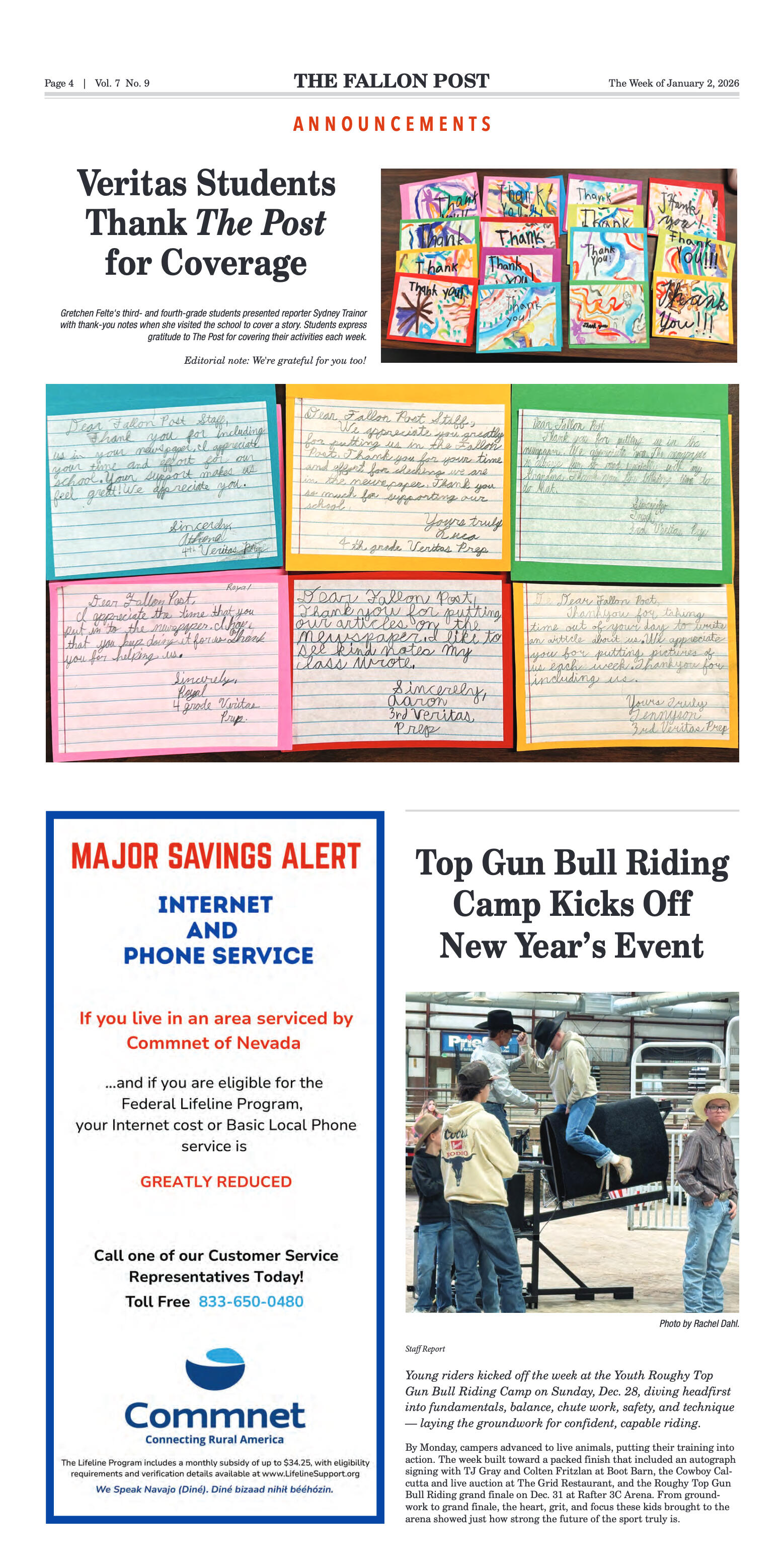



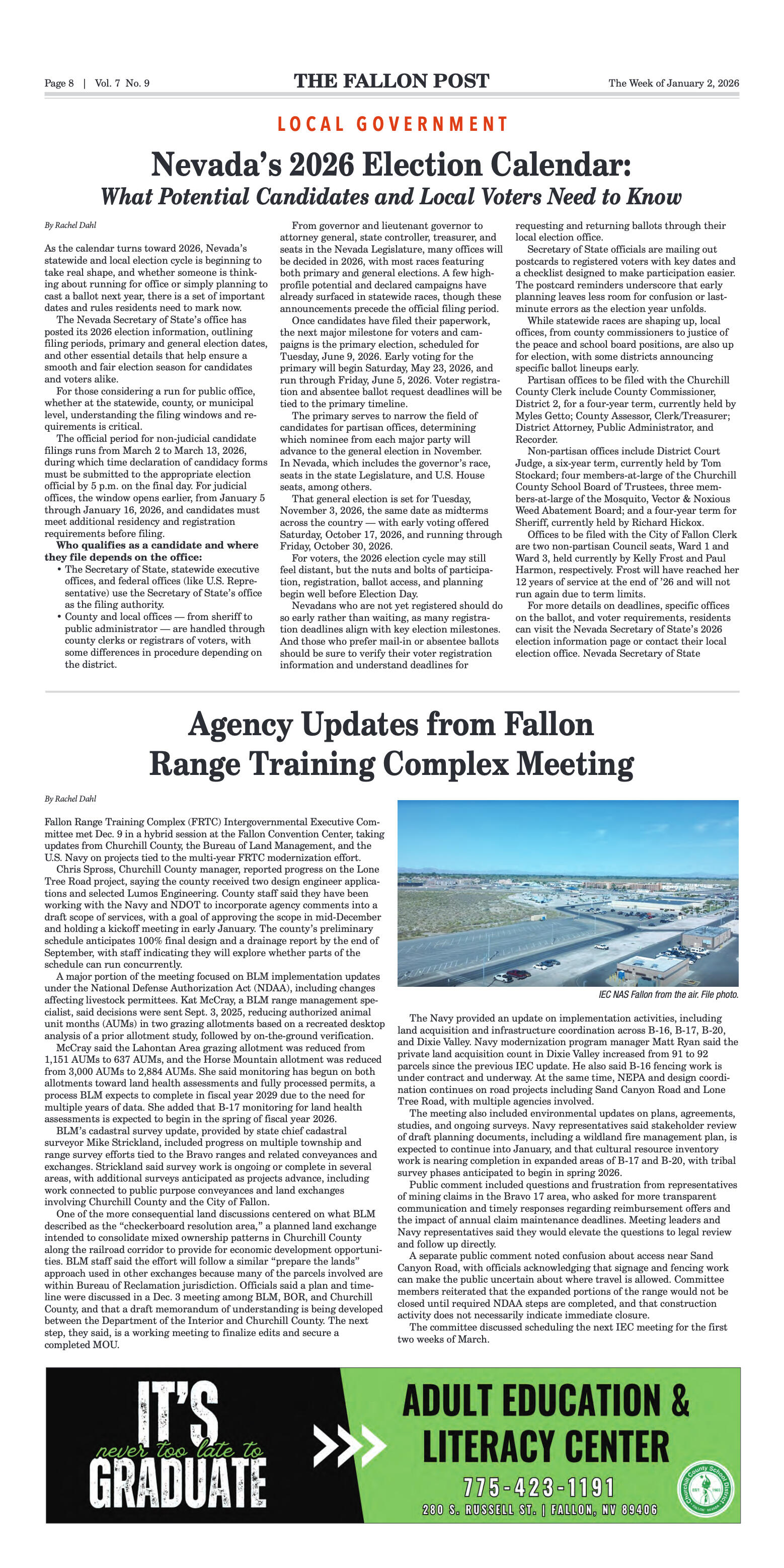
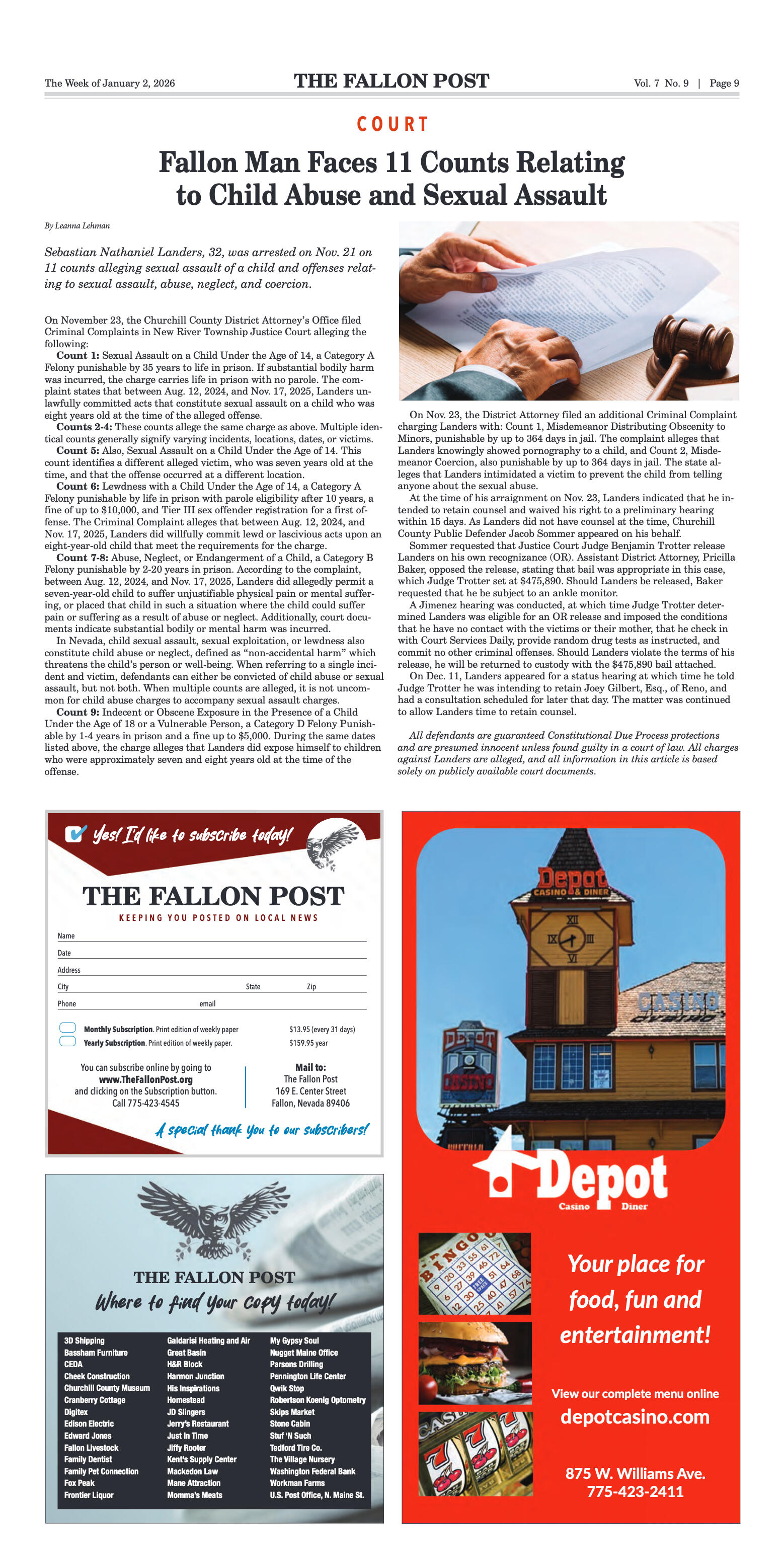
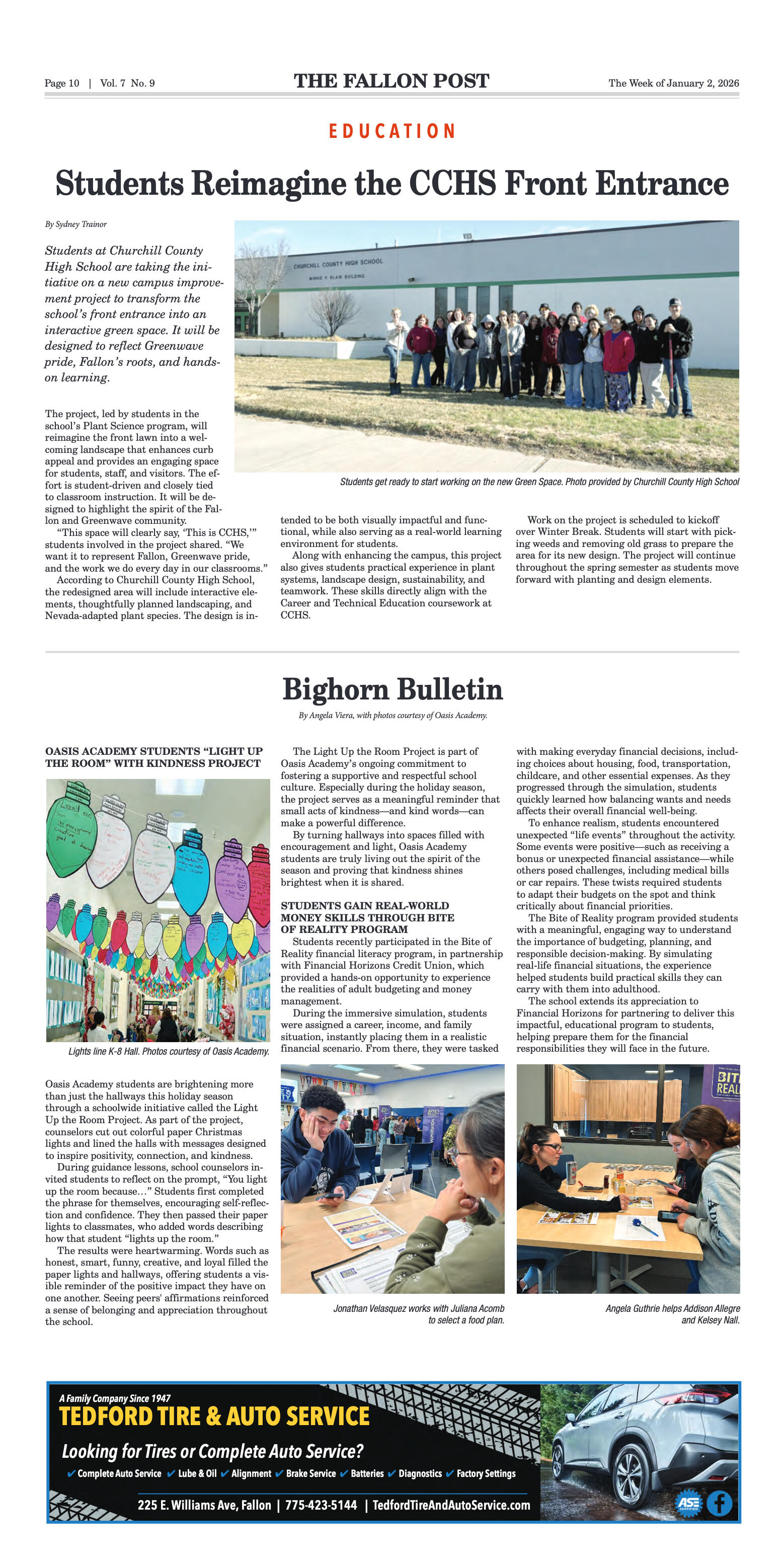
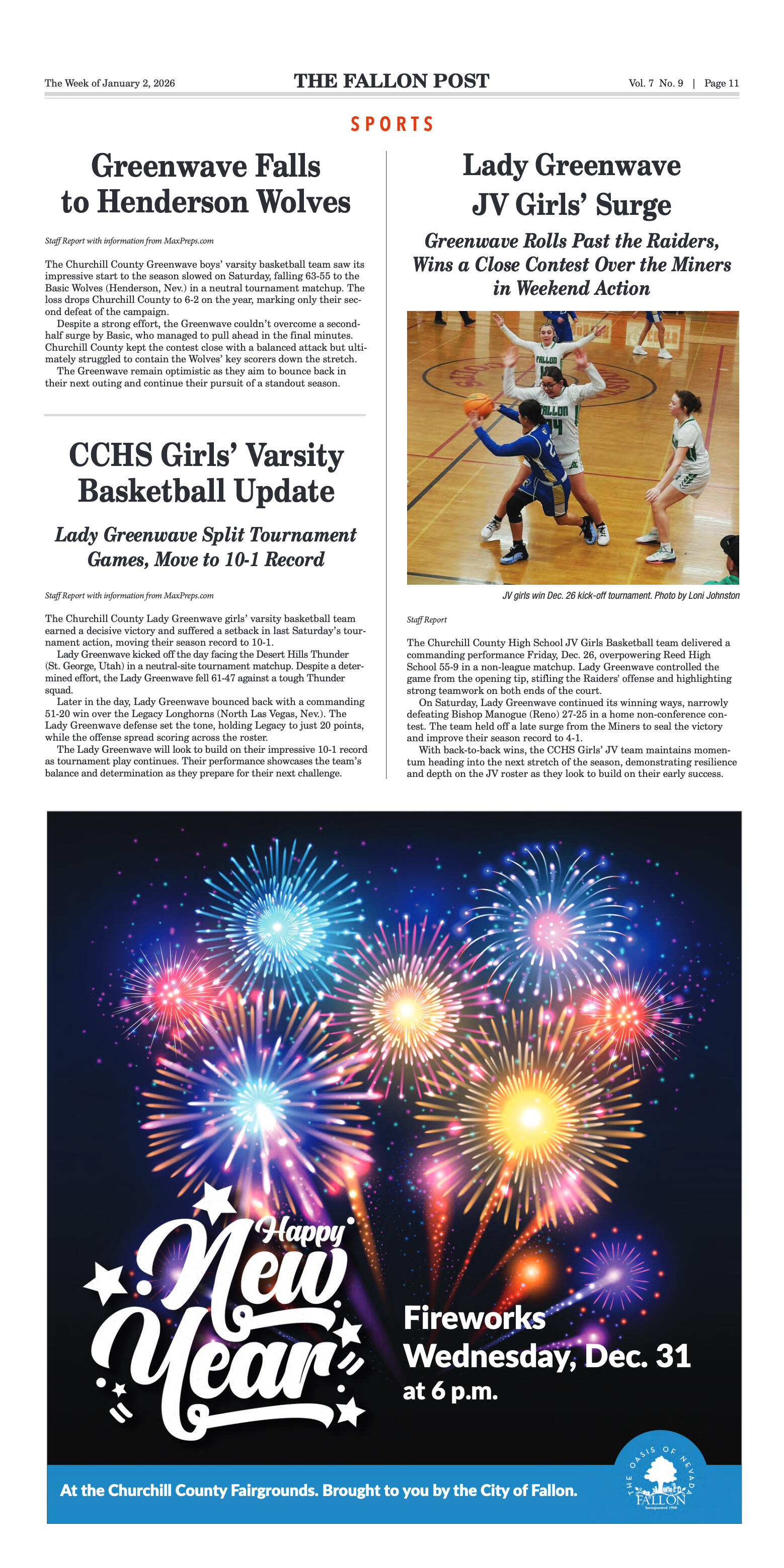


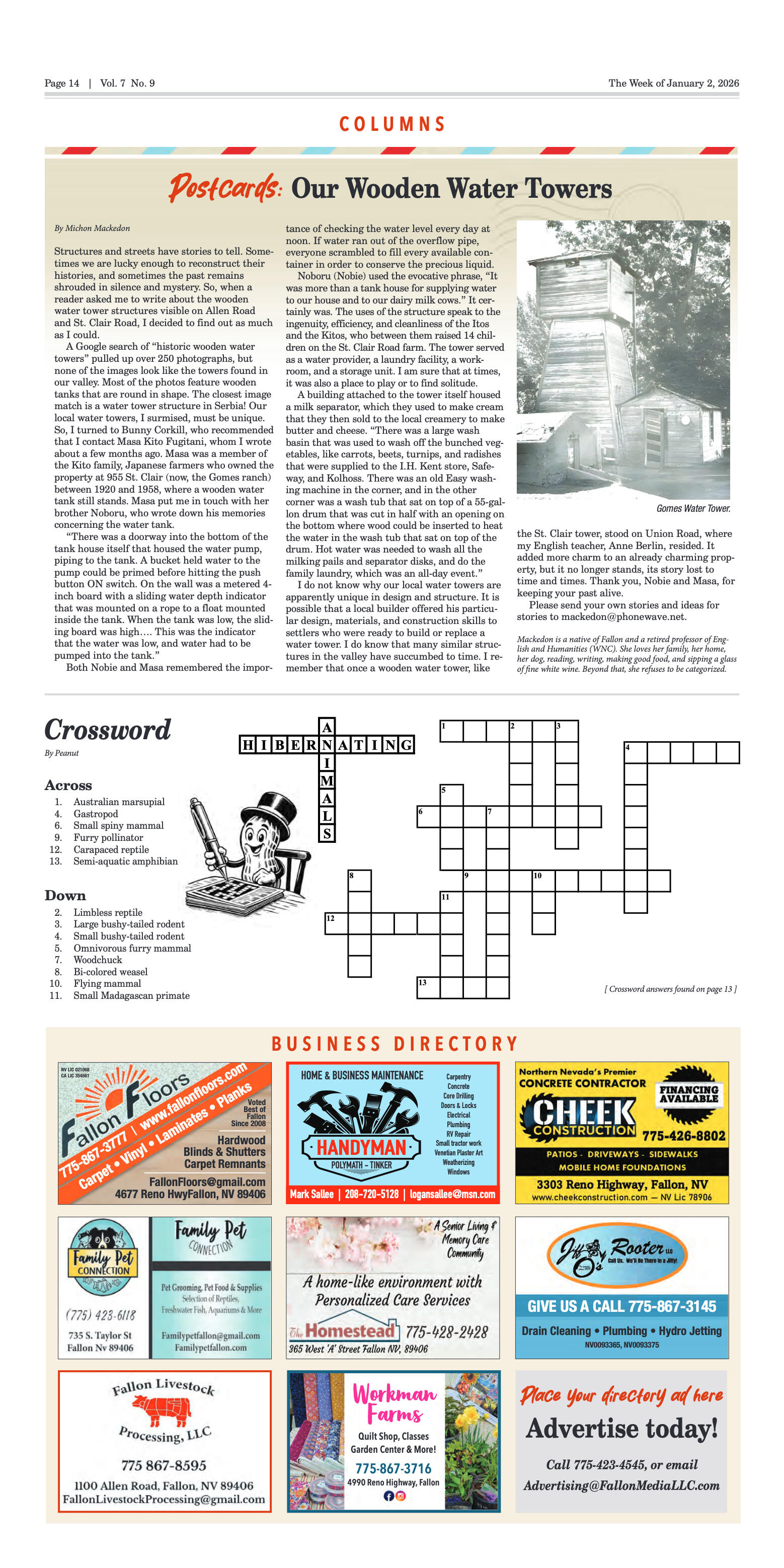
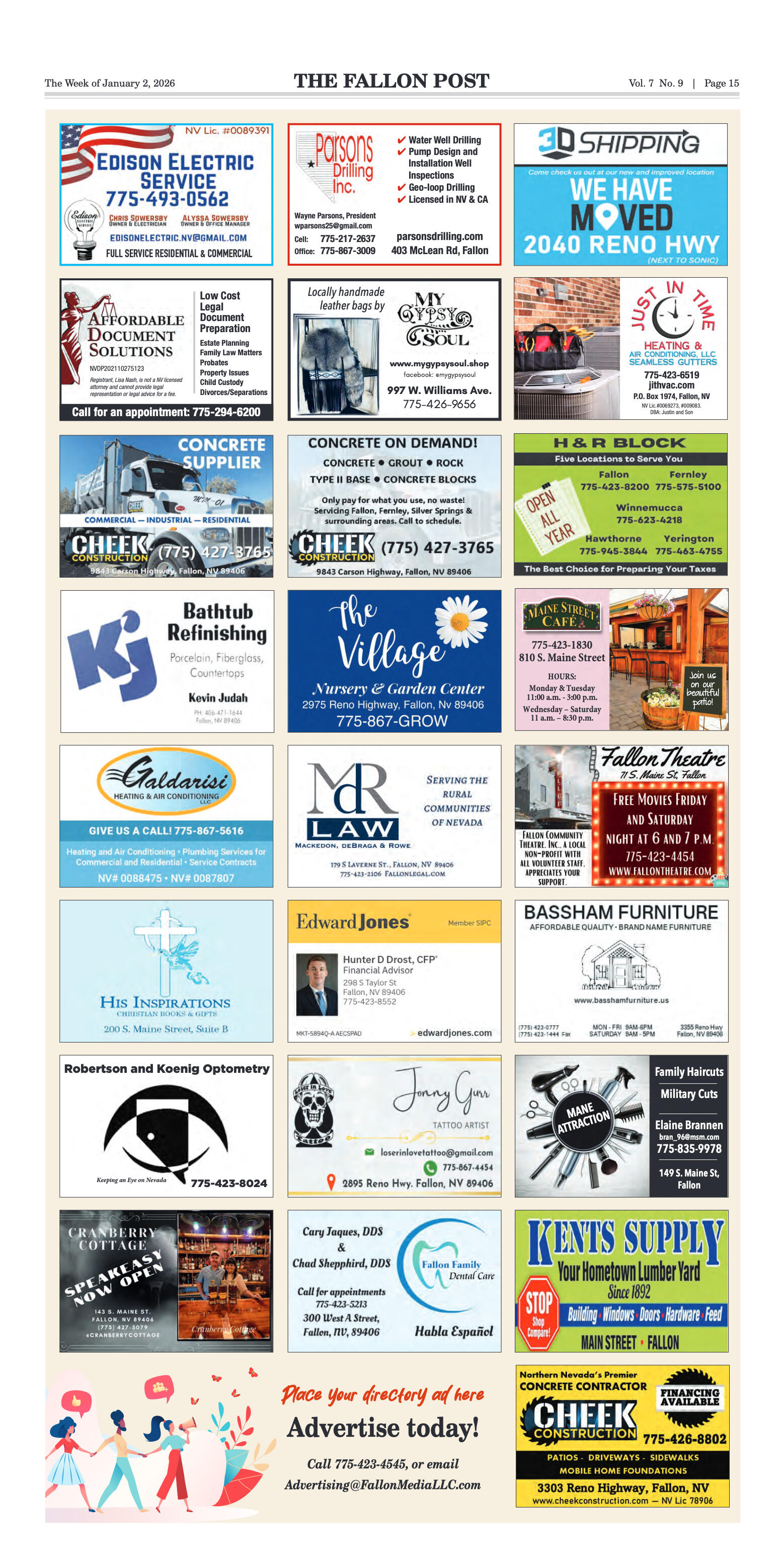




















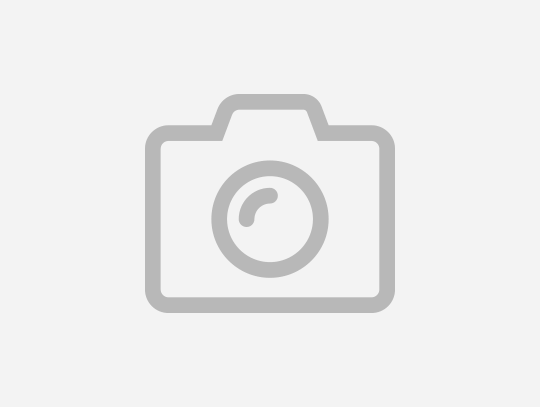


Comment
Comments